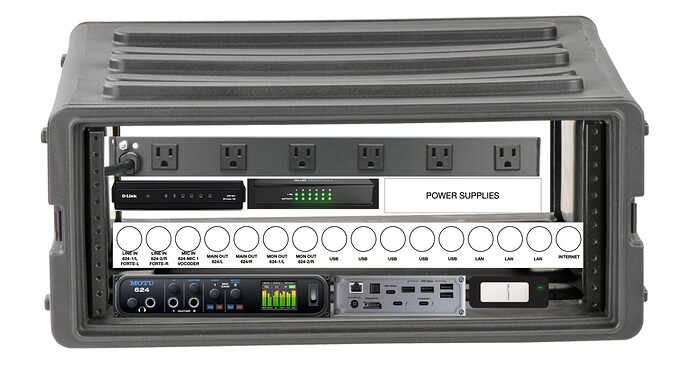Hello - I just joined the forum after learning about gig performer and seeing some of the videos.
I’m a software developer (using a mac) during the day and in my off hours, I’m a gigging musician in two cover bands. For the past couple years I’ve been gigging with a Nord 88 on the bottom and a Korg Kronos 61 on top. The Korg is used to cover several 80s songs using a lot of commercial patches (Audora, NarfSounds, bbkeySounds) which are pretty accurate.
The reason I’m here is because the Kronos is exhibiting some hardware problems which has started manifesting at gigs (losing the usb midi connection so it can’t change patches, and suddenly lowering the sound output, which requires a reboot to fix). That and the fact that Korg no longer sells the Kronos and doesn’t seem to have a worthy replacement - has led me to looking seriously at taking a VST approach to replace it.
For the first phase I’m looking to just replace the Korg and will continue to use my Nord. I use a key largo as a mixer and that supports USB-based audio output which can be mixed in and sent out so that’s one option. I also have a scarlett i4i available, not sure if that would be a better alternative. I use ForScore on my iPad to manage the set lists across both bands - it sends out midi program change commands to all my keyboards as songs are selected. I plan on continuing to use that and have it select gigPerformer songs that way (similar to what I saw someone else do with band helper)
I worked with sweetwater and now have a Keylab 61 MKII for a controller. I also got the Arturia collection 9, Korg collection + Wavestate - which should cover my 80s synth needs in theory. I’ve ordered a beefy mac mini (M2 pro, 32GB ram, 4TB SDD) which will be used as a dedicated VST box. Eventually I’ll look at rack mounting the mac mini into a portable rack with the other hardware (wifi router?, usb hub?) and cables I’ll need to connect into my controller/keylargo.
Until that gets here I’ve been playing around with mac-based options using my work M1-based macbook pro. I put together a few patches with main stage but found some show stopping stability problems which led me here.
Right now I’m feeling a little overwhelmed, I’ve been watching several videos about using gig performer and I’m starting at the basics of just trying to bring in some sounds that I need. I’ve heard that some people have taken a sampling approach, capturing patches from the original device.
Since the Korg mostly provides synth sounds, It seems the many synths available to me in the two collections I have should be able to give me what I need. I just don’t know if there are already preset patches already available for known sounds, or how hard it would be to recreate them using the Korg defaults as a guide. For example the wavestation Hd1 patches on the Korg should be able to be created pretty closely on the WaveState. The MS20 sounds should just map directly, and the subtractive synth sounds could just be created -but it would be time consuming. In the long run would it be less taxing to use the virutal synth vs creating a bunch of sampled sound files? I’m not even sure what my options are for grabbing the samples and playing them back from gig performer. I presume I’ll need one or more plugins to do that?
In watching the videos, I’ve seen Kontakt used a lot when creating patches. I think I want to get that eventually, but don’t know how soon or which version - seems like a lot of the people in the videos are using the Komplete Ultimate, which is a little pricey atm.
I guess I’m looking for advice from others who have gone through a similar process of migrating from a Korg Kronos into gig performer panels/songs.
